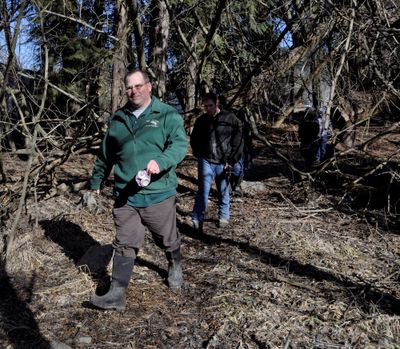Field Reports: Colville Hatchery school project leader dies

FISHERIES – Jono Esvelt, the fish and wildlife educator for Colville and Kettle Falls high schools who led a pioneering project to have students run the Colville Fish Hatchery, died from complications of a knee injury infection on Thursday.
Esvelt, who taught vo-tech and other courses, directed student operation of the 19-acre trout hatchery Stevens County purchased in 2013 as surplus property from the Washington Department of Fish and Wildlife.
“The news hits us in the heart,” said Mitch Combs, manager of the state’s nearby Sherman Creek Hatchery. “To Jono, everybody else came first.
“Whether it was coaching sports or trapshooting, he’s what made a lot of programs work for kids.”
Esvelt was instrumental in starting a new forestry and wildlife class that, among other things, managed the hatchery.
“Taking over a fish hatchery required a lot of commitment,” Combs said. “Jono was the shining star. He was a mentor and friend to a lot of kids who might have fallen through the cracks.”
Esvelt is survived a wife and two sons. A memorial service is set for Monday, 2 p.m., at the Colville Ag Center.
Scotchman trail reopened
HIKING – The trail to Scotchman Peak near Clark Fork, Idaho, has been reopened after a four-month closure prompted by aggressive mountain goats.
In making the announcement on Friday, Idaho Panhandle National Forest officials issued recommendations for coexisting with the peak’s iconic goats.
Trail No. 65, a 7-mile, round-trip route to the peak, was closed in September as goats habituated to humans had caused several injuries to hikers. Visitors who had enticed the goats with food had taught some of the goats to demand food or aggressively lick hikers’ skin for salt.
“In June 2015, a hiker was bitten by a goat and required multiples stitches,” the forest media release said. “Additionally, there were numerous reports of goats attempting to head-butt or charge hikers, which could easily lead to serious injury or death.
“The temporary closure was intended to allow time for the goats find other sources of food beyond the handouts provided by hikers, and to reduce their willingness to approach humans.”
To discourage goat encounters and keep the trail open to the public, wildlife experts recommend people stay at least 100 feet away from the goats and if goats approach, to yell, wave clothing and throw rocks from a distance to scare them away, Forest Service officials said.
“It is bad goat etiquette to feed them and allow them to lick salt off your hands,” they said, urging hikers to educate others who may not be aware of safe practices.